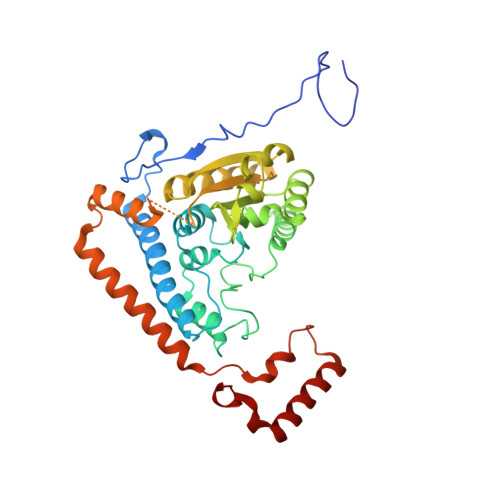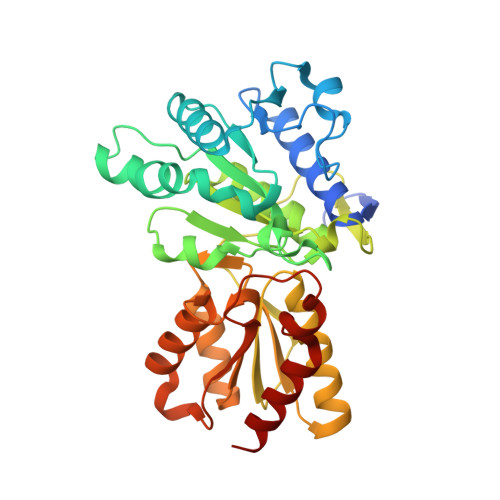A Versatile Conformational Switch Regulates Reactivity in Human Branched-Chain Alpha-Ketoacid Dehydrogenase.
Machius, M., Wynn, R.M., Chuang, J.L., Tomchick, D.R., Brautigam, C.A., Chuang, D.T.(2006) Structure 14: 287
- PubMed: 16472748
- DOI: https://doi.org/10.1016/j.str.2005.10.009
- Primary Citation of Related Structures:
1WCI, 2BEU, 2BEV, 2BEW, 2BFB, 2BFC, 2BFD, 2BFE, 2BFF - PubMed Abstract:
The dehydrogenase/decarboxylase (E1b) component of the 4 MD human branched-chain alpha-ketoacid dehydrogenase complex (BCKDC) is a thiamin diphosphate (ThDP)-dependent enzyme. We have determined the crystal structures of E1b with ThDP bound intermediates after decarboxylation of alpha-ketoacids. We show that a key tyrosine residue in the E1b active site functions as a conformational switch to reduce the reactivity of the ThDP cofactor through interactions with its thiazolium ring. The intermediates do not assume the often-postulated enamine state, but likely a carbanion state. The carbanion presumably facilitates the second E1b-catalyzed reaction, involving the transfer of an acyl moiety from the intermediate to a lipoic acid prosthetic group in the transacylase (E2b) component of the BCKDC. The tyrosine switch further remodels an E1b loop region to promote E1b binding to E2b. Our results illustrate the versatility of the tyrosine switch in coordinating the catalytic events in E1b by modulating the reactivity of reaction intermediates.
- Department of Biochemistry, University of Texas Southwestern Medical Center, 5323 Harry Hines Boulevard, Dallas, Texas 75390, USA. mischa.machius@utsouthwestern.edu
Organizational Affiliation:























